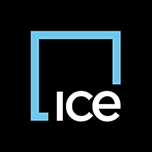Mortgage Point of Sale: What Is It?

In the mortgage industry, a Point-of-Sale System (POS) is a digital tool that connects home buyers with lenders via the Internet. A mortgage POS serves two essential functions: (1) to provide a portal for loan applicants and (2) to facilitate communication and document exchange.
In addition to providing convenience, simplicity and efficiency for borrowers, the mortgage POS also serves as a way for lenders and partners to stay top of mind with shared clients throughout the mortgage application process. A POS provides lenders with data insights and accelerates the loan cycle using artificial intelligence and automation to eliminate process friction and bottlenecks. Other lender benefits include enhanced market share, more competitive rate offerings, faster approvals and improved loan quality.
The following are elements of a modern mortgage Point-of-Sale system that help lenders provide borrowers and partners a seamless virtual experience:
A secured portal
…to facilitate loan application, document upload and eSignature
Borrowers log in to complete a loan application, store documents, or communicate with their lender. Ease of use is crucial, as the portal is intended to automate manual work that would otherwise be tedious and time-consuming.
In addition, secure document upload and eSignature provide peace of mind to borrowers who are asked to upload confidential records and include their signature without the hassle and inconvenience of manual paperwork.
Virtual application
The standard mortgage application, also known as the Uniform Residential Loan Application, or Form 1003, is the form most lenders use in the United States. It requires information about the property being purchased, as well as the borrower’s financial details, including employment, income, assets and liabilities.
This form is required by both the Federal National Mortgage Association (Fannie Mae) and the Federal Home Loan Mortgage Corporation (Freddie Mac) and is typically submitted in the initial stages of the origination process and included at closing.
Automated communications
An artificial intelligence tool helps keep the application process moving forward by assessing whether the correct documents have been recorded, identifying potential roadblocks and helping the lender work from the latest and most accurate data available.
Partner engagement
Partnerships are a vital part of the mortgage origination pipeline, and it is only natural for partners, especially real estate agents, to want to stay in the loop on how the loan application is progressing and continue to cultivate a relationship with the borrower.
A good POS provides a way for partners to view their clients, manage notes, check progress, and generate pre-approval letters. Client and shared client links can also be used to track lead intake.
Pipeline overview and management
The goal of all sales pipelines is to convert every lead into a customer. It is vital for lenders to monitor their pipeline closely to identify patterns and note which leads have the potential to convert.
Leveraging a POS to manage a lender’s pipeline will save time and energy by removing the need to sort through documents or manually calculate performance metrics. The right solution will allow lenders to produce reports as needed and generate timely reminders of pending tasks.
With most lenders working on sales teams, the pipeline information should be accessible to the other team members. Every member of the sales team can work efficiently and cohesively with consistent pipeline data flow available to them.
Compliant controls, reporting, and design
Given the sensitive nature of financial data, cybersecurity is critical.
POS-related data breaches in recent years have shown that point-of-sale systems are vulnerable and need to be protected. Remaining informed and proactive in confirming your business is well-secured is crucial to preventing data breaches or security issues.
PCI compliance refers to the technical and operational standards set out by the PCI Security Standards Council that lenders need to implement and maintain. The goal of being PCI-compliant is to keep borrower data secure and applies to any lender that accepts, transmits, or stores that data.
The right POS solution will make it very easy to detect any suspicious or fraudulent activity and act accordingly to prevent any wrongdoing from occurring. An unsecured network is a material risk to a lender as hackers can infiltrate the unsecured installations and steal data. Therefore, it is essential that the POS technology be kept up to date on a separate, protected network. Using the latest technology, the POS will have access to the most current and advanced security measures to provide the lender peace of mind.
Branding control and customization
Brand awareness refers to the degree to which consumers recognize a product or service by its name. Lenders that maintain a high level of brand awareness are much more likely to generate sales as consumers prefer companies they are familiar with. An effective POS should provide the needed flexibility and control over your organization’s brand. This includes the lender selecting their brand’s color palette to be consistent throughout their tech stack in addition to their logo being displayed appropriately.
The more the borrower is accustomed to their lender’s branding, the higher the probability that they will remember their lender and be able to provide them referrals. This proves how integral brand control and customization is to a lenders’ success.
Integration
Digital collaboration among different layers of the tech stack is a key component in streamlined project management, quicker closings and client satisfaction. Mortgage point-of-sale platforms provide the ability to integrate with all parties involved in the mortgage loan process. This means less manual work and double data entry and provides for a single source of truth.
Each technology solution within the stack must work cohesively to provide the best experience for the lender and borrower. With direct integration, as loans originate in the lender’s LOS, the POS communicates with the LOS to update loan data and important records. As the POS updates the LOS, the LOS then updates the CRM tool. This allows for a streamlined process and reduces the opportunity for human error or duplication. Additionally, this automation saves time and energy by preventing lenders from having to upload their data manually and sorting through their large data sets down the line.
After the borrower has completed the online loan application, the lender downloads the file directly to their computer. With the FNM 3.2 or MISMO 3.4 file saved to the lenders’ computer, it can then be imported to their LOS or lender portal.
Direct integration allows the POS to be the portal where the borrower can review their documents and check the status of their loan application and funding. The mortgage loan application is then pushed to the LOS where the rest of the underwriting is done.
In some cases, the POS portal is hosted by the LOS, depending on the relationship between the originator and the loan officer. For example, in wholesale lending there may be a different flow than retail, IMB or depository institution lending. Often the LOS and POS collaboration is so seamless that the systems appear to behave as one.
For the borrower, an effective POS provides convenience and exceeds the expectations for virtual efficiency. For the lender, the right POS will streamline the mortgage application process completely from application through post-closing.
Where can I find the right solution for me?
To learn more about which mortgage POS solution will help you best streamline your mortgage loan process, or to schedule a demo, check out LoanCatcher®, Black Knight’s LOS solution.



